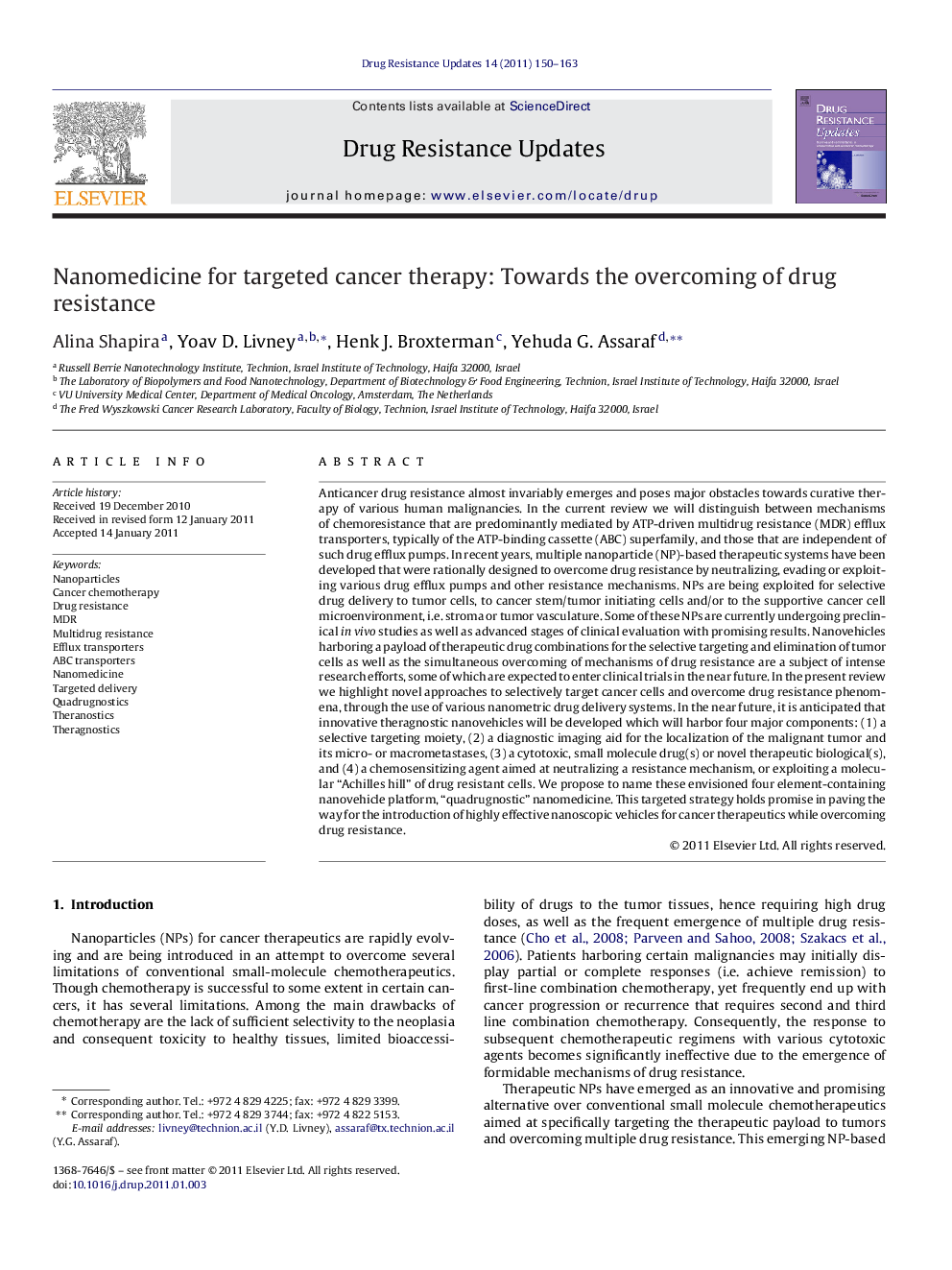| Article ID | Journal | Published Year | Pages | File Type |
|---|---|---|---|---|
| 2120451 | Drug Resistance Updates | 2011 | 14 Pages |
Anticancer drug resistance almost invariably emerges and poses major obstacles towards curative therapy of various human malignancies. In the current review we will distinguish between mechanisms of chemoresistance that are predominantly mediated by ATP-driven multidrug resistance (MDR) efflux transporters, typically of the ATP-binding cassette (ABC) superfamily, and those that are independent of such drug efflux pumps. In recent years, multiple nanoparticle (NP)-based therapeutic systems have been developed that were rationally designed to overcome drug resistance by neutralizing, evading or exploiting various drug efflux pumps and other resistance mechanisms. NPs are being exploited for selective drug delivery to tumor cells, to cancer stem/tumor initiating cells and/or to the supportive cancer cell microenvironment, i.e. stroma or tumor vasculature. Some of these NPs are currently undergoing preclinical in vivo studies as well as advanced stages of clinical evaluation with promising results. Nanovehicles harboring a payload of therapeutic drug combinations for the selective targeting and elimination of tumor cells as well as the simultaneous overcoming of mechanisms of drug resistance are a subject of intense research efforts, some of which are expected to enter clinical trials in the near future. In the present review we highlight novel approaches to selectively target cancer cells and overcome drug resistance phenomena, through the use of various nanometric drug delivery systems. In the near future, it is anticipated that innovative theragnostic nanovehicles will be developed which will harbor four major components: (1) a selective targeting moiety, (2) a diagnostic imaging aid for the localization of the malignant tumor and its micro- or macrometastases, (3) a cytotoxic, small molecule drug(s) or novel therapeutic biological(s), and (4) a chemosensitizing agent aimed at neutralizing a resistance mechanism, or exploiting a molecular “Achilles hill” of drug resistant cells. We propose to name these envisioned four element-containing nanovehicle platform, “quadrugnostic” nanomedicine. This targeted strategy holds promise in paving the way for the introduction of highly effective nanoscopic vehicles for cancer therapeutics while overcoming drug resistance.
